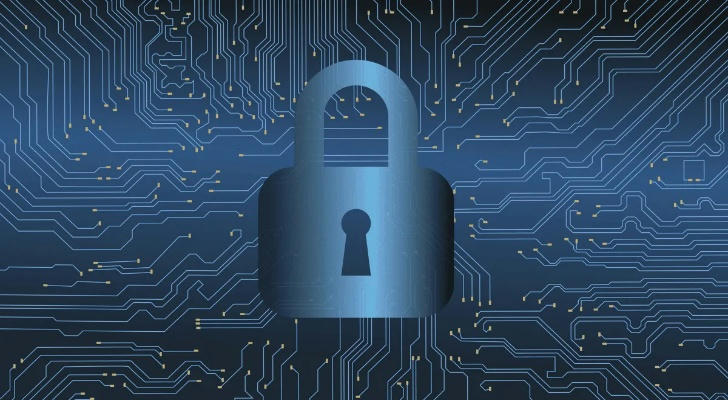Essential Cybersecurity Training: Protecting Data in the Digital Age
In an increasingly digital world, cybersecurity has become a fundamental concern for businesses and individuals alike. Cyber threats continue to evolve, making it essential to stay informed and adopt effective security measures. This training course provides an in-depth understanding of cybersecurity principles, best practices, and preventive measures to protect sensitive information from cyberattacks. 🔒💻

Understanding Cybersecurity
Cybersecurity refers to the practice of protecting networks, devices, and data from unauthorized access, breaches, and cyber threats. It involves multiple layers of defense to ensure the confidentiality, integrity, and availability of information. Key cybersecurity components include:
Network Security – Measures to protect a network from unauthorized access, including firewalls and intrusion detection systems. 🌐
Endpoint Security – Protecting individual devices such as computers, smartphones, and tablets from malware and threats. 🖥️📱
Data Security – Ensuring that sensitive data is encrypted and protected against leaks and breaches. 🔑
Cloud Security – Securing data stored in cloud-based services and preventing unauthorized access. ☁️
Application Security – Preventing vulnerabilities in software applications that cybercriminals might exploit. 🛡️
Common Cyber Threats
Cyberattacks come in various forms, and understanding them is crucial to implementing effective defenses. The most common threats include:
Phishing Attacks – Fraudulent emails or messages designed to trick users into revealing sensitive information. 📧🚨
- Case Study: In 2020, Google reported blocking 18 million phishing emails related to COVID-19 per day. Many of these emails impersonated health organizations, tricking users into sharing personal information.
Malware – Malicious software such as viruses, ransomware, and spyware that can damage systems or steal data. 🦠
- Case Study: The 2017 WannaCry ransomware attack affected over 200,000 computers across 150 countries, causing damages estimated at $4 billion.
Ransomware – A type of malware that encrypts files and demands payment for their release. 💰🔓
- Case Study: The Colonial Pipeline attack in 2021 led to fuel shortages in the U.S. after a ransomware gang demanded a $4.4 million payment.
Denial-of-Service (DoS) Attacks – Overloading a system to make it unavailable to users. 🌪️
- Case Study: In 2016, the Mirai botnet attack took down major websites, including Twitter, Netflix, and Reddit, by infecting IoT devices and launching massive DoS attacks.
Man-in-the-Middle Attacks – Intercepting communication between two parties to steal or manipulate data. 🕵️

Best Practices for Cybersecurity
Implementing cybersecurity best practices can help prevent data breaches and security incidents. Essential security measures include:
Strong Passwords and Multi-Factor Authentication (MFA) – Use complex passwords and enable MFA for extra security. 🔑✅
- Data: A report by Verizon found that 81% of hacking-related breaches were due to weak or stolen passwords.
Regular Software Updates – Keeping operating systems, applications, and antivirus programs up to date. 🔄
- Case Study: The Equifax data breach in 2017, which exposed the data of 147 million people, resulted from a failure to patch a known vulnerability.
Employee Training and Awareness – Educating staff about cybersecurity threats and how to recognize them. 🎓
- Data: Studies show that 90% of security breaches are caused by human error, highlighting the need for proper training.
Secure Wi-Fi and VPN Use – Encrypting connections to protect sensitive information from hackers. 🔐📡
- Case Study: In 2019, hackers targeted hotel chains by exploiting weak public Wi-Fi networks, leading to data theft of thousands of guests.
Data Backup Strategies – Regularly backing up important files to prevent data loss. 💾
- Data: 60% of small businesses that experience a cyberattack without backups go out of business within six months.
Email and Phishing Protection – Verifying email sources before clicking links or downloading attachments. 📩⚠️
- Case Study: In 2016, the Democratic National Committee (DNC) email leak occurred due to a successful phishing attack, influencing the U.S. presidential election.

Incident Response and Recovery
Despite best efforts, cyber incidents may still occur. A well-prepared response plan can minimize damage and ensure business continuity:
Identify and Contain the Threat – Detect the attack early and take steps to prevent further damage. 🚨
Report the Incident – Inform IT security teams or external cybersecurity experts for further investigation. 🕵️♂️
Restore from Backups – If data is compromised, restoring from backups ensures minimal disruption. 🔄💾
Strengthen Security Measures – Analyze the breach to improve defenses and prevent future incidents. 🔍
The Role of Organizations and Individuals in Cybersecurity
Both businesses and individuals have a shared responsibility in maintaining cybersecurity:
Organizations should:
Develop cybersecurity policies and guidelines. 📜
Implement security awareness training for employees. 🎓
Invest in cybersecurity tools and services. 💰
Conduct regular security audits and risk assessments. 📊
Case Study: Microsoft invests over $1 billion annually in cybersecurity research and development to stay ahead of evolving threats.
Individuals should:
Stay vigilant against online scams and phishing attempts. 👀
Use strong, unique passwords for different accounts. 🔑
Enable security features on devices and accounts. 🔒
Keep personal and professional data secure. 🏠💼
Data: A study found that 56% of individuals reuse passwords across multiple accounts, increasing vulnerability to cyberattacks.
Conclusion
Cybersecurity is a continuous process that requires awareness, proactive measures, and a commitment to protecting data. By understanding cybersecurity fundamentals, recognizing common threats, and implementing best practices, individuals and organizations can reduce risks and enhance their digital security. With real-world cases and data highlighting the importance of cybersecurity, this training course serves as a comprehensive guide to staying safe in the ever-evolving cyber landscape. 🚀
